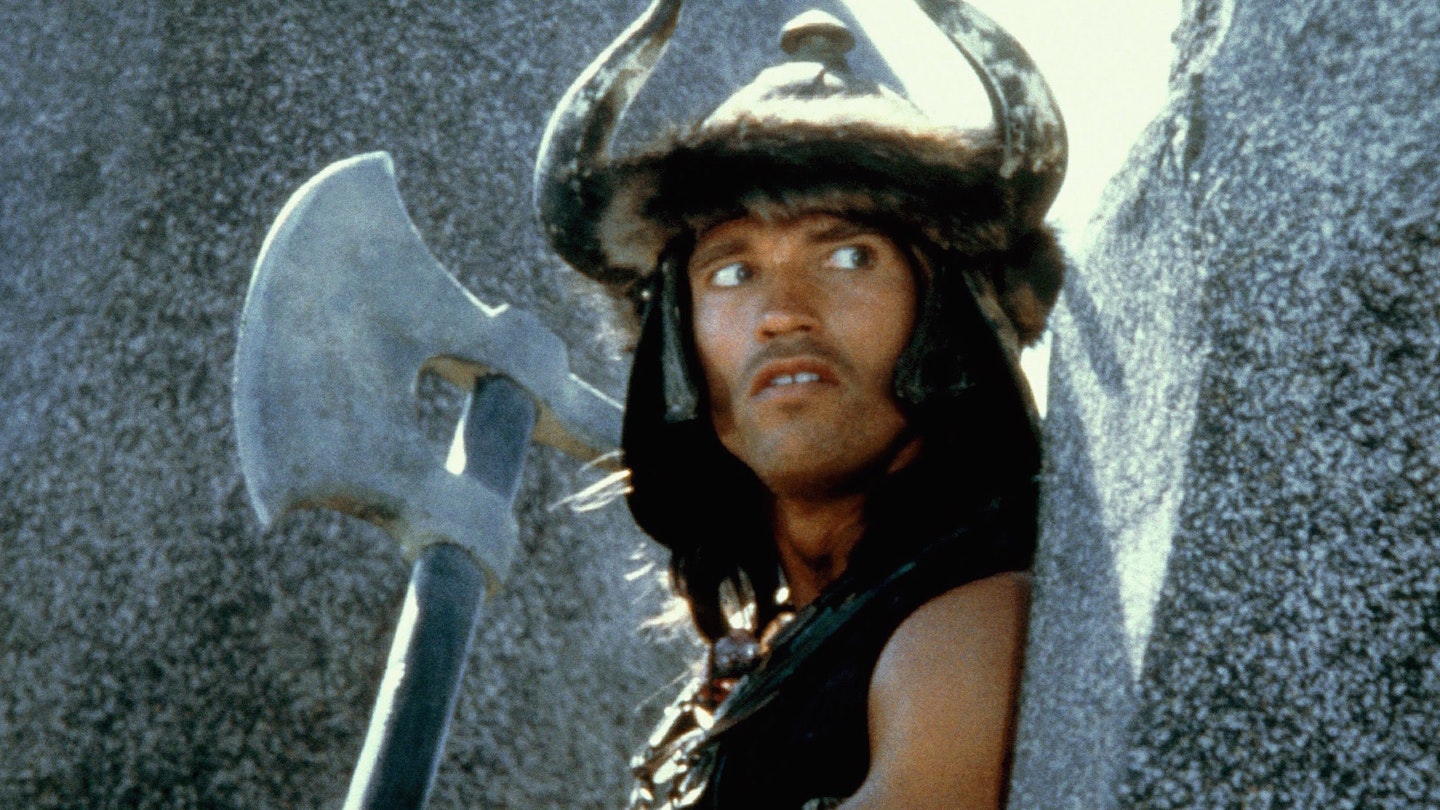Back in the days of yore, before VHS and in its infancy, your only opportunity to own a film was to buy the book. Novelisations still happen (The Dark Knight Rises got one this year), but in Arnold Schwarzenegger’s heyday, they were far more widespread. The big man himself was not exempt from getting the screen-to-page treatment. With his autobiography just out, we've looked back at his unbelievable life in fiction during the 1980s. Get to da chapter!
Conan The Barbarian
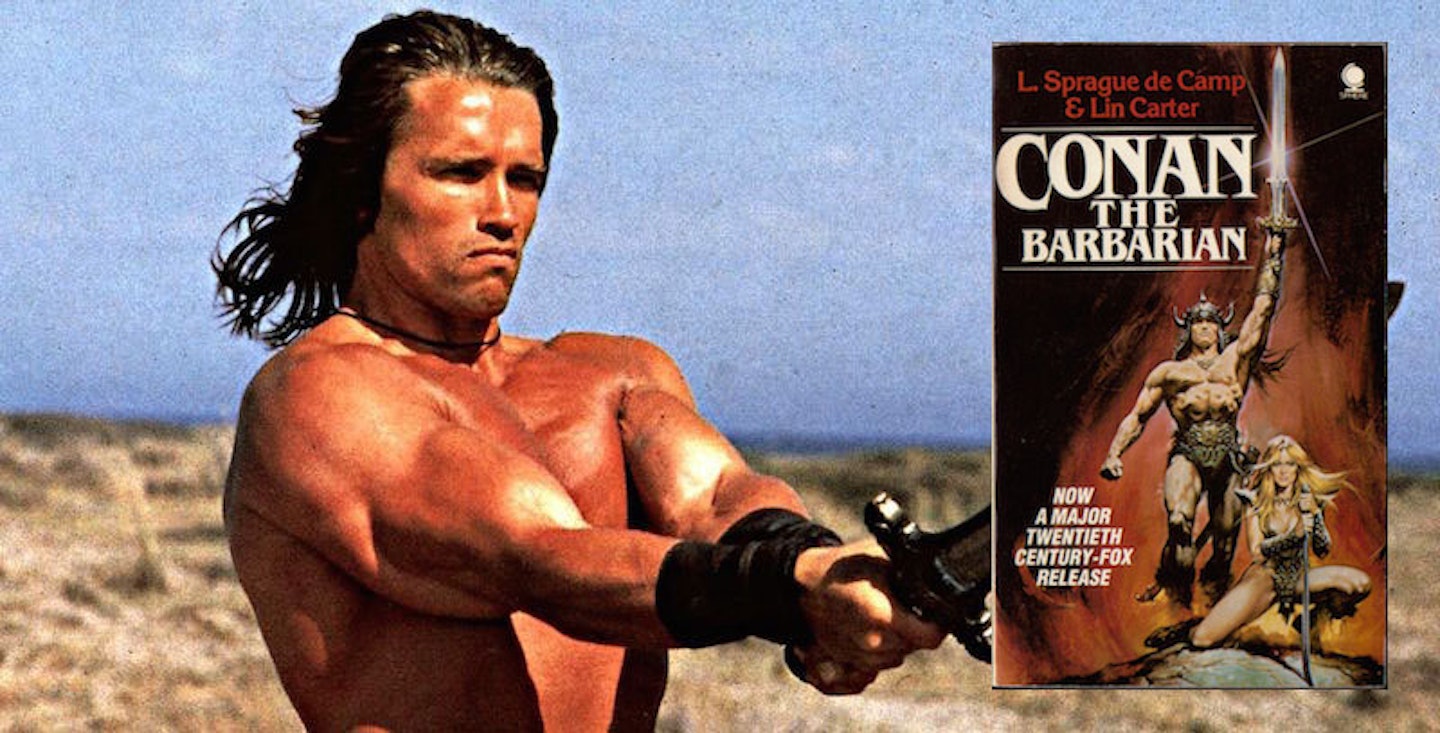
Screenplay: Oliver Stone and John Milius
Novelisation: L. Sprague de Camp and Lin Carter
Oliver Stone’s barking mad original screenplay had been reined in by director John Milius’ subsequent rewrite, but Conan The Barbarian still bore scant resemblance to the writings of Robert E. Howard. The novelisation does an interesting job of relating Milius’ story in a pastiche Howard style, however. The book’s landscape isn’t quite as weirdly empty as the film’s; we spend more time with Conan during his pit-fighting years; and Conan escapes his gladiatorial life thanks to a handy earthquake, rather than simply being freed. He also has a lot more to say in the book than he does when Arnold plays him.
L. Sprague de Camp was Conan’s custodian in print for years, publishing collections of Conan stories that mixed Howard’s writing with his own. He even rewrote Howard on several occasions, taking Howard’s non-Conan stories and putting Conan in them. The business in the film with Conan chased by wolves and stumbling upon a cavern where he finds a sword on the body of a dead Atlantean comes from Camp’s own story The Thing In The Crypt. Roy Thomas had already adapted it for Marvel comics, which is where Milius likely first read it. So for that sequence, Camp, in the novelisation, is adapting Milius, who adapted Thomas, who adapted Camp. If a story’s worth telling, it’s worth telling four times.
The Terminator
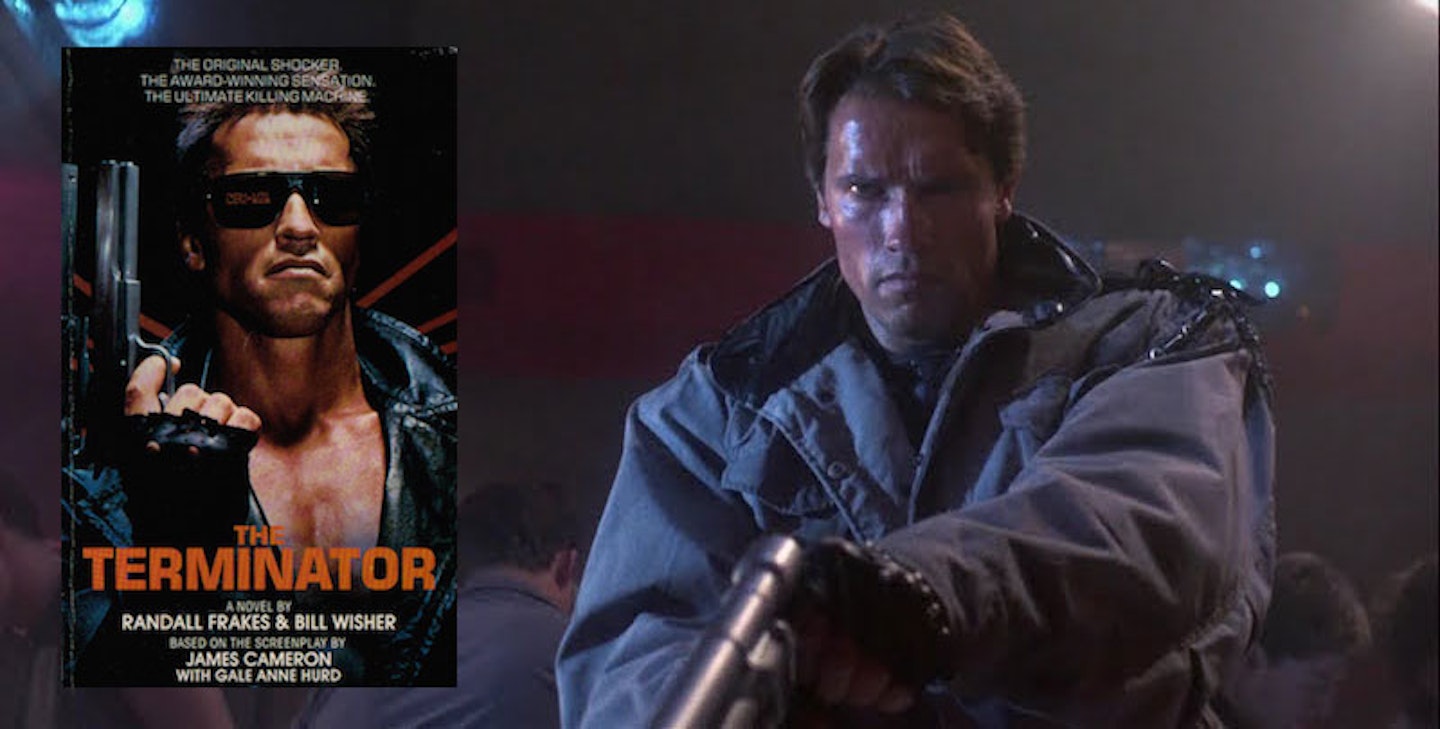
Screenplay: James Cameron and Gale Anne Hurd
Novelisation: Shaun Hutson, and Randall Frakes & Bill Wisher
The Terminator was actually novelised twice. In Britain the gig went to British horror author Shaun Hutson, while in the States the novelisation came courtesy of franchise regulars Randall Frakes and William Wisher.
“When I wrote The Terminator, no-one had seen the film because it wasn’t finished yet,” [Hutson told ](http://www.thisishorror.co.uk/columns/the-gorefather/film-to-book-adaptations/tations/)[This Is Horror](http://www.thisishorror.co.uk/columns/the-gorefather/film-to-book-adaptations/tations/)[ recently](http://www.thisishorror.co.uk/columns/the-gorefather/film-to-book-adaptations/tations/). “I had a third draft script to work from and that was it. I didn’t even particularly like what I read but what the fuck did I know? It turned out to be one of the biggest selling novelisations of the time, and I think it took me 15 days to complete the book. I wasn’t interested in the backstory, the lives of the characters outside the script and all that other stuff that writers who’ve done novelisations sometimes drone on about. I wanted to be faithful to what was in front of me. I simply elaborated the scenes in the script, concentrating on the violence, [which is] my forte.”
Wisher, meanwhile, is credited with “additional dialogue” on the actual film of The Terminator, and wrote Terminator 2 outright. He also provided as-yet-unmade treatments for future Terminator films, and even made quick cameo appearances in front of James Cameron’s cameras. So perhaps he had a bit more sympathy for the material than his UK counterpart...
Conan The Destroyer

Screenplay: Stanley Mann and Roy Thomas & Gerry Conway
Novelisation: Robert Jordan
Notoriously, Richard Fleischer’s Conan the Destroyer is a more family-friendly affair than John Milius’ berserk Conan the Barbarian. It had a troubled writing process too, with Roy Thomas and Gerry Conway relegated to a mere story credit when their work was overhauled by Stanley Mann (they eventually published their own version as a comic). Jordan’s novelisation doesn’t have much to work with then, and it’s all wrapped up very quickly and conveniently. But like L. Sprague de Camp before him, Jordan makes an attempt to better tie the story in with Robert E. Howard’s work. Some locations are changed, Taramis is made a princess rather than a queen (it’s a continuity thing), and there’s more sex and violence than we see in the film. Mako’s wizard character actually gets to do some proper wizarding too, and Jordan’s special effects are better: Dagoth here is a sort of Lovecraftian bat-thing, rather than Andre the Giant lumbering around in a bad rubber suit.
Jordan got the gig because he was already writing Conan novels. Starting in 1982, he wrote Conan The Invincible, followed by The Defender, The Unconquered, The Triumphant, The Magnificent and The Victorious. The Destroyer is the second-to-last of his run though, and a few years after Conan he started a little project of his own called The Wheel of Time...
Raw Deal
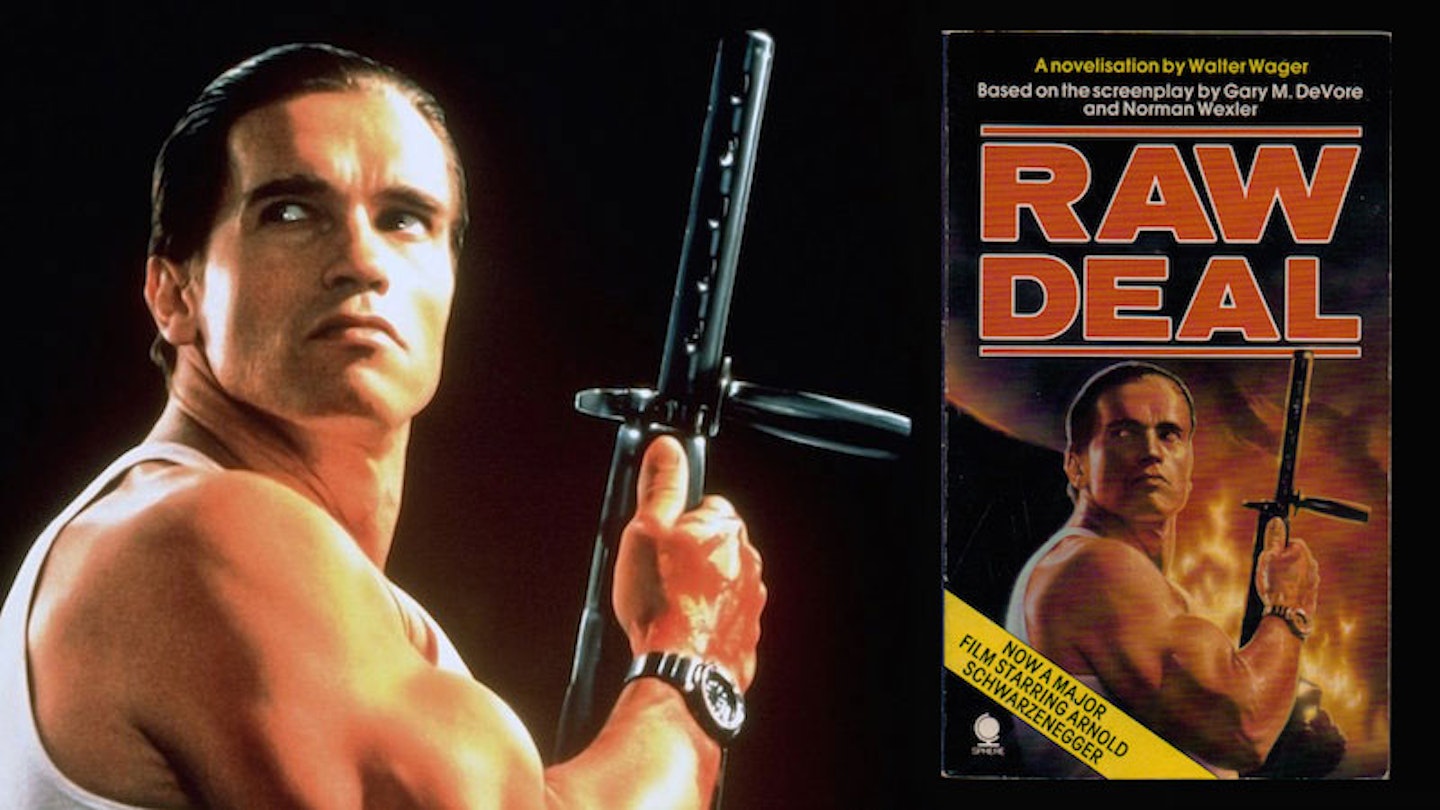
Screenplay: Gary M. DeVore and Norman Wexler
Novelisation: Walter Wager
There’s no Red Sonja novelisation, and sadly, tragically, there was never a novelisation of Commando. We can only imagine: it’s probably the greatest loss to world literature since Gogol burnt the second half of Dead Souls.
Our next Arnie book then is Raw Deal, and like its protagonist Mark Kaminsky, it’s ruthlessly efficient. Not even stretching to 200 pages, Wager doesn’t do much to flesh out the film, and the most significant differences are omissions. Wager clearly didn’t have much truck with the hokily sentimental scene that ends the film, where the injured Harry Shannon learns to walk again. So that’s out. And while Kaminsky does head into the final firefight in a Cadillac, at no point does he listen to The Rolling Stones.
Wager knew his way around a decent thriller though. He’d previously written the novel Telefon, which Don Siegel filmed with Charles Bronson. Subsequently, he’d write 58 Minutes, which was adapted for film as Die Hard 2: Die Harder.
Predator

Screenplay: Jim Thomas and John Thomas
Novelisation: Paul Monette
This is an interesting one, since it’s clearly written at a point in the production when nobody yet had a clear idea of what the Predator was. Nothing like the eventual Stan Winston creation with the dreadlocks and the mandibles and the invisibility gear, Paul Monette presents a kind of shapeshifter. A sort of giant blue lizard, it can still do the camouflage thing, but it can also morph into the shape of the jungle animals it encounters: at one point it turns into a hawk and stalks the marines from the air. Structure-wise, the story is identical until the end. After Dutch goes over the waterfall we get some of the mud-covered Tarzan business, but the final confrontation happens at the alien’s parked spaceship: Dutch throws the alien’s own dropped sci-fi spear, and kills the creature just as it’s boarding to leave. Somehow, this causes the ship to explode too, so that’s the big "kaboom" at the end, rather than the film’s nuclear Predator self-destruct mechanism.
It’s an odd piece of work for a Yale-educated poet, but Monette’s novelisation work coincided with a brief period pitching screenplays in Hollywood. He also wrote books based on Scarface, Midnight Run and Werner Herzog’s Nosferatu. He’ll be best remembered as the author of the unbearably moving memoir Borrowed Time in 1988, chronicling the death of his partner Roger Horwitz from AIDS. There’s a great documentary about Monette online here{
The Running Man

Screenplay: Steven E. de Souza
Novel: Stephen King (writing as Richard Bachman)
This one isn't a novelisation. The book came first, but it’s so different to the film that we’re including it anyway. Written in 1982 by Stephen King, under his thriller-author pen name 'Richard Bachman', the Ben Richards of the book is lanky and unhealthy – about as far from Arnie as you could get. Rather than being thrown into The Running Man gameshow as punishment for a crime, he volunteers as an escape from poverty and to earn money to treat his sick daughter. And the show, rather than taking place in an enclosed game zone, takes place across the US. Richards can run wherever he chooses, submitting a video diary to the TV station twice a day, and the book takes in Detroit, New York, Boston, New Hampshire, and, of course (this is King after all) Maine.
The hitmen on Richards’ trail aren’t fancy super-villains with trademark weapons either, and the ending – slightly queasy post-9/11 – could not be more different. In fact, the book and the film don’t have much in common at all, bar the general concept of the game, the character names and the title. The novel is a furiously quick read, written in a furiously quick seven days by the energetic King. We just had a new Total Recall, but if anything in Arnie’s back catalogue is worth redoing, it’s this.
Red Heat
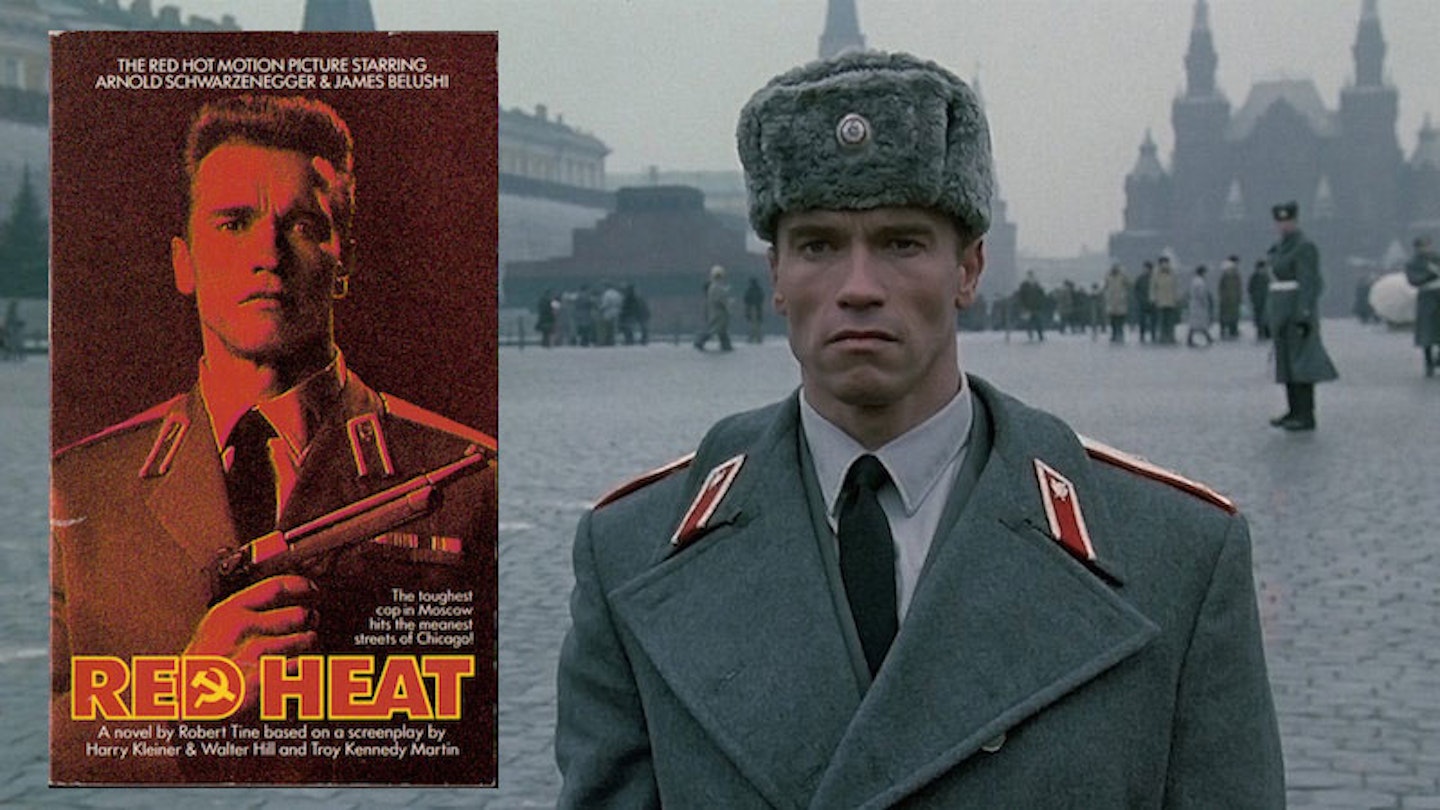
Screenplay: Harry Kleiner & Walter Hill and Troy Kennedy Martin
Novelisation: Robert Tine
Not Walter Hill’s finest hour (it’s pretty much a retread of 48 Hours with the details changed), and not much embellished by this bit of hack-work. A lot of the dialogue is word-for-word with the film (including Ridzik’s “You think she bought those? I think she grew them at home”) and there are very, very few ‘deleted scenes’. We do get a bit of background for Ridzik and Danko though, and a scene where Danko takes down a gang leader in Joliet Prison in amusing style, before his meeting with Abdul Elijah. Danko talks with extra K’s too, because, like, he’s Russian. “Kapitalism,” he smirks to himself at one point.
Robert Tine was one of the go-to guys for novelisations in the ‘80s and ‘90s. He also did Universal Soldier, The Bodyguard, Footloose, Bill and Ted’s Bogus Journey, all three Beethoven movies (the ones about the St. Bernards), JAG 1 and 2, Outbreak, Chain Reaction... The extraordinary list goes on. Red Heat wasn’t his only encounter with Arnie either: in the '90s he wrote novelisations of Last Action Hero and Eraser.
Total Recall
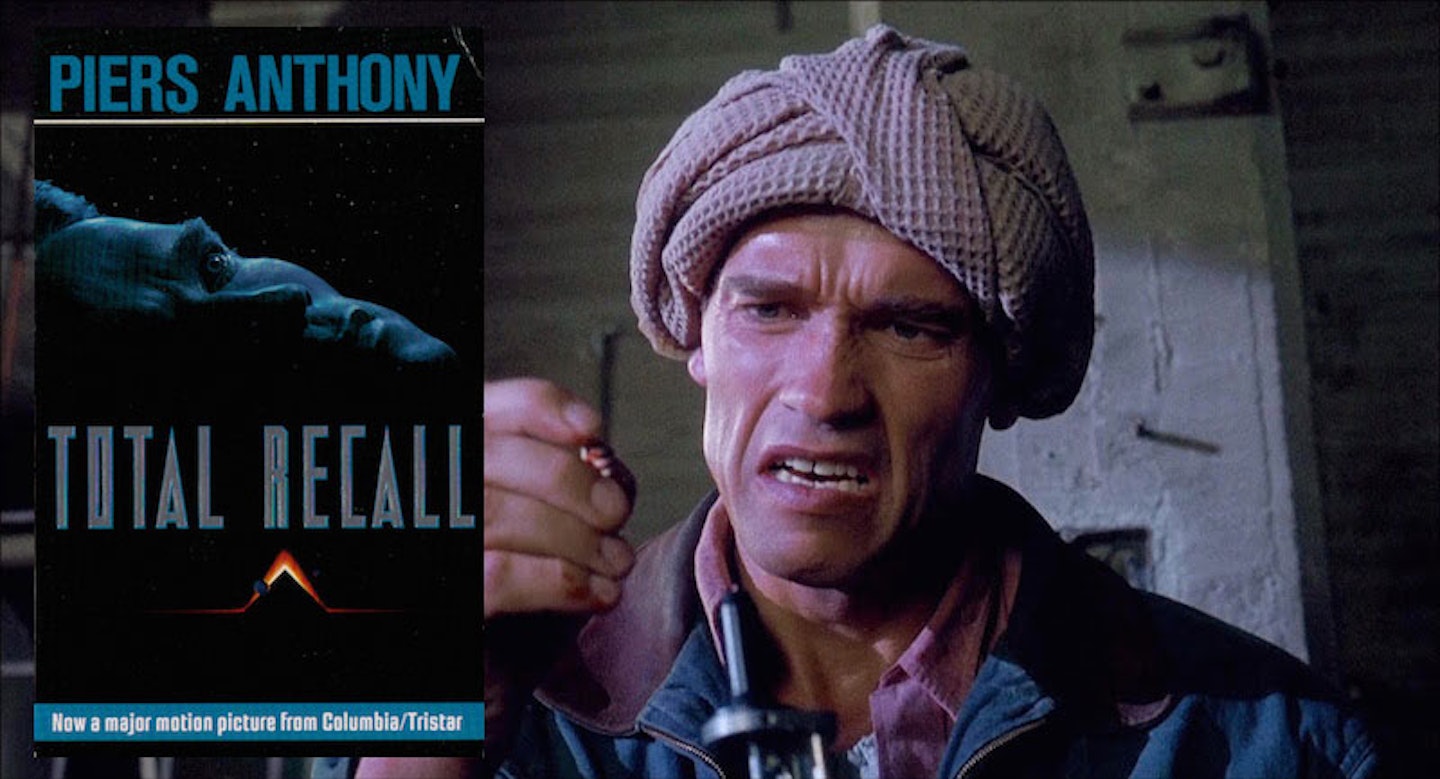
Screenplay: Ronald Shusett & Dan O’Bannon
Novelisation: Piers Anthony
As with the Conan movie books, established author Piers Anthony attempted to tie in what’s basically an original screenplay with the source it’s supposed to be based on. He doesn’t really have enough to work with to pull that off – or rather, he’s too contractually beholden to the film to be able to get much Philip K. Dick into the book – but this is still a clever sci-fi yarn. It certainly strips out all the Verhoeven craziness, although of course, that might be something you very much miss...
Anthony didn’t much enjoy the novelisation process, and never wrote another one. “I learned how crazy the movie industry could be,” he told Empire a couple of years ago, “and how ignorant script writers could be. They had things like the hero wiping out 13 of the 12 thugs who came at him; holding radio dialogues with folk on Mars with no time delay when even at light speed there’d be 15 minutes between responses... There was no background on the formidable alien equipment on Mars, so I developed that on my own, and I borrowed freely from the original Phil Dick story to add more of his original material to the novel. I like to think that he would have appreciated the job I did. He was a competent, imaginative writer; I am another. I was protecting his creative effort, and one private pleasure has been the fan letters I received saying that the book was better than the movie!"
